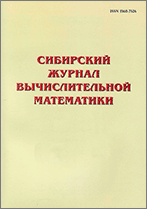|
This article is cited in 5 scientific papers (total in 5 papers)
The influence of the shelf zone relief and the coastline geometry on coastal trapped waves
G. A. Platov
Institute of Computational Mathematics and Mathematical Geophysics SB RAS, 6 Lavrentiev pr., Novosibirsk, 630090, Russia
Abstract:
This paper presents the results of numerical experiments with a model of the coastal trapped waves, which made it possible to identify two features that are important in terms of the regional modeling of the shelf zone interaction with the open ocean. The first feature is the fact that the wave train of this type may be formed as a result of the wind action at a considerable distance from the place where their impact may occur. The propagation of waves along the coastline takes place without significant loss of wave energy, provided that the coastline and topography of the shelf zone contain no features comparable to the Rossby radius. However, the wave loses its energy while passing capes, submarine canyons and in the case when the width of a shelf decreases. For the regional modeling, the possibility of remote wave generation should be well understood and taken into account. The second feature is that a propagating wave is able to spend part of its energy on the formation of density anomalies on a shelf by raising the intermediate waters of the adjoining offshore areas of the open ocean. Thus, the coastal trapped waves carry the wind energy from the areas of the wind impact to other coastal areas, where it can bring about the formation of density anomalies and other types of motion.
Key words:
coastal trapped waves, shelf zone, marginal seas.
Received: 15.09.2015
Revised: 06.04.2016
Citation:
G. A. Platov, “The influence of the shelf zone relief and the coastline geometry on coastal trapped waves”, Sib. Zh. Vychisl. Mat., 19:3 (2016), 297–316; Num. Anal. Appl., 9:3 (2016), 231–245
Linking options:
https://www.mathnet.ru/eng/sjvm619 https://www.mathnet.ru/eng/sjvm/v19/i3/p297
|

| Statistics & downloads: |
| Abstract page: | 262 | | Full-text PDF : | 163 | | References: | 39 | | First page: | 11 |
|




 Contact us:
Contact us: Terms of Use
Terms of Use
 Registration to the website
Registration to the website Logotypes
Logotypes









 Citation in format
Citation in format 
